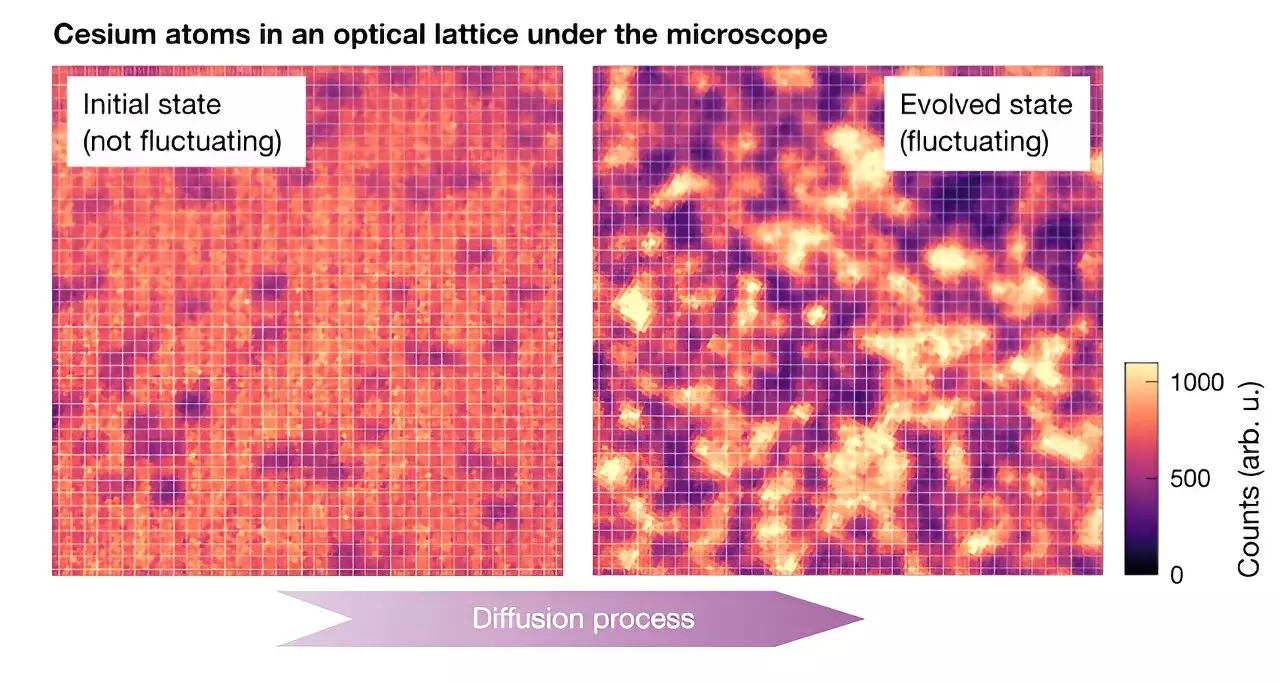The complexity of quantum systems presents both challenges and opportunities for researchers aiming to understand how these systems behave over time. A recent study conducted by a collaboration of researchers from Ludwig-Maximilians-Universität, Max-Planck-Institut für Quantenoptik, Munich Center for Quantum Science and Technology (MCQST), and the University of Massachusetts sheds new light on this issue. Published in *Nature Physics*, their findings explore the dynamics of equilibrium fluctuations within large quantum systems, employing innovative tools like quantum gas microscopes for precise measurement and observation.
In the realm of quantum mechanics, understanding a system composed of many interacting particles is especially daunting. Julian Wienand, a co-author of the paper, emphasizes the difficulty of simulating such systems directly. The sheer number of particles can overwhelm computational resources, making it impractical to track each particle’s movement individually. This emphasizes a critical challenge in current quantum physics: while the interactions and properties of particles are well understood, predicting the dynamics of large systems remains computationally intensive and often unrealistic.
Fortunately, the researchers propose a viable alternative using concepts from hydrodynamics. In chaotic systems, the assumption can be made that particles will converge towards a state of local thermal equilibrium. This principle allows physicists to treat the system as a continuous density field, adhering to simplified differential equations. This innovative approach merges concepts of classical fluid dynamics with quantum particles, adopting what is termed “fluctuating hydrodynamics” (FHD). According to Wienand, FHD extends classical theories to incorporate small-scale fluctuations, essentially treating these fluctuations as “white noise” that adds depth and realism to the predictive models.
The empirical backbone of this study involved advanced quantum simulations using a cesium (Cs) quantum gas microscope. This sophisticated instrument enables researchers to trap ultracold cesium atoms within an optical lattice, creating a confined environment where quantum interactions can be closely monitored. With this framework, the researchers could capture “snapshots” of the quantum many-body system, providing them with invaluable data regarding particle occupancy and dynamics within the lattice.
By strategically manipulating the depth of the lattice, the researchers were able to observe how the quantum system transitioned from a static to a dynamic state, demonstrating diffusion and thermalization while tracking the evolution of fluctuations in particle numbers.
The study’s results reveal that FHD could serve as an effective theoretical model for describing chaotic quantum systems, providing both qualitative and quantitative analyses. Interestingly, the findings indicate that even though the complexities of quantum mechanics can appear chaotic on a microscopic scale, the resultant behavior on a macroscopic level can be understood through simpler, classical models. The researchers identified a single, key parameter—the diffusion constant—that encapsulates the system’s macroscopic dynamics, revealing a surprisingly elegant link between equilibrium properties and out-of-equilibrium states.
Wienand continues to highlight the significance of this relationship: “Despite working out-of-equilibrium, the quantum many-body system demonstrates behavior that aligns closely with equilibrium concepts within the framework of FHD.”
The implications of this research stretch far beyond the initial findings. By establishing a theoretical foundation that connects classical and quantum systems, the researchers have opened up new avenues for exploration. Future investigations are set to address pressing questions regarding fluctuation behavior in non-thermalizing systems, as well as examining higher-order statistical properties such as skewness and kurtosis. The potential to adapt FHD to more complex observables or exotic systems could further illuminate the quantum landscape.
The study conducted by Wienand and colleagues represents a significant breakthrough in our understanding of chaotic quantum systems. By merging hydrodynamics and quantum mechanics, they present a pragmatic approach to modeling complex interactions that are traditionally difficult to manage. The results not only deepen our insights into quantum dynamics but also encourage further explorations into the applicability of FHD in other contexts. As researchers continue to unravel these quantum mysteries, we inch closer to a more comprehensive understanding of the elegant yet enigmatic behaviors of the quantum world.

